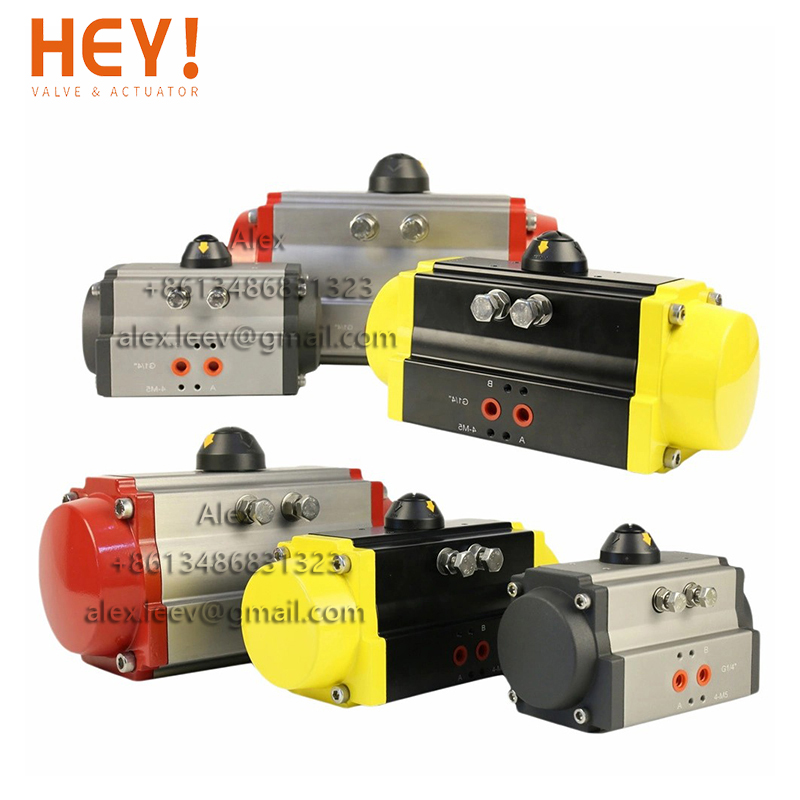Air-powered actuators have a vital role in a range of manufacturing uses, changing compressed air into kinetic action to regulate the functioning of equipment and tools. These devices are essential for automating operations, providing efficient and consistent performance in environments in which speed and accuracy are crucial. However, relying solely on automated control systems can occasionally lead to problems, particularly during unexpected failures or maintenance situations. This is why the concept of a human override is crucial.
Merger a manual override with pneumatic actuators provides that operators have command even when automated systems experience difficulties. This integration offers a safety net, allowing for manual intervention to preserve operation and minimize downtime. Whether it be for urgent situations or standard adjustments, a pneumatic actuator with manual override fuses the best of both worlds, providing flexibility and peace of mind in various manufacturing settings.
Grasping Gas Devices
Pneumatic actuators are instruments that transform squeezed gas into the form of kinetic action. These devices serve a vital function in multiple industrial uses, managing the actions of stopcocks, tubes, and various equipment. Through the use of the force of pressurized air, such actuators provide trustworthy and effective methods of control, rendering them essential in manufacturing, processing, and handling tasks.
The operation of a compressed air device typically involves a diaphragm or piston that shifts in response to changes in gas pressure. As air is inputted into the actuator, it generates a power that moves the actuator's internalized parts, allowing it to carry out tasks such as opening or closing ports. This rapid reaction time and capability to generate considerable force render it pneumatic devices ideal for uses that need fast and exact shifts.

In also to their efficiency, pneumatic actuators can be constructed with hand-operated overrides to guarantee working control under different situations. air actuator with manual override -controlled intervention permits users to exercise explicit authority of the actuator's action, that is especially important in emergencies or when automatic management systems malfunction. This combination of pneumatic operation and hand oversight improves the overall reliability and flexibility of production mechanisms.
Significance of Manual Control
Manual interventions are essential in systems utilizing pneumatic actuators as they provide a fail-safe method for managing the machinery in the instance of an emergency or outage. When mechanical systems encounter a problem or when outside conditions cause them ineffective, having the ability to intervene ensures that operators can maintain control. This ability is essential in manufacturing environments where safety and continuous operation are critical.
Additionally, manual controls enhance the adaptability of pneumatic systems. Operators can quickly modify settings or control the actuator directly without depending entirely on automated systems. This adaptability is particularly beneficial during service or diagnostics, allowing for prompt adjustments and helping technicians to diagnose issues more efficiently. The manual option allows operators to intervene when necessary, ensuring productivity and reducing potential delays.
Furthermore, incorporating human controls into pneumatic actuators encourages a greater sense of control and confidence among operators. Knowing they have the ability to manually override automatic systems helps reduce anxiety in stressful environments. It nurtures a culture of proactive safety, as staff feel more prepared to handle unexpected situations and can respond swiftly to avert disasters or equipment failures. The existence of a manual override not only improves operational reliability but also creates a sense of ownership among the workforce.
Implementations and Advantages
Air-powered cylinders with manual controls are widely used in industries such as production, food manufacturing, and medicines. In automated systems, these devices deliver the accuracy and consistency required to manage various processes, from basic valve functioning to sophisticated machinery movements. The addition of a hand-operated override feature permits operators to easily intervene in situations where automation may malfunction or need modifications, ensuring continuous operation and minimizing inactivity.
One of the major advantages of using air-powered cylinders with manual overrides is improved safety. In high-stakes settings where automated controls may create hazardous conditions, the ability to by hand control the device provides an added layer of security. Operators can swiftly take charge during emergencies or system malfunctions, ensuring that processes can be stopped or adjusted to avoid accidents. This dual capability fosters a safer workplace while maintaining productivity.
Moreover, these actuators offer considerable adaptability in operations. With the hand override capability, operators can make immediate changes based on changing circumstances or specific requirements. This flexibility is particularly advantageous in dynamic environments where operations need to be modified swiftly. As a consequence, companies can enhance productivity while maintaining oversight over their systems, leading to greater operational efficiency and adaptability.
